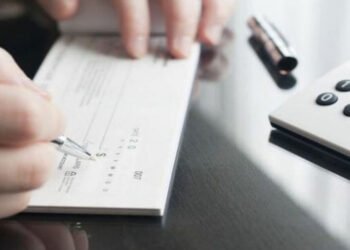Revolving credit is one of the main types of credit alongside installment loans and open credit. It gives a borrower access to a line of credit that they can use more than once. Once they withdraw from the line of credit, they will have to make repayments (potentially with interest). These repayments will replenish the balance of the line of credit, which the borrower is free to draw from again. As long as the borrower makes their repayments, this credit can be used over and over—hence the name, “revolving credit.”
So, how can you get your hands on revolving credit? These are some revolving credit tools available:
Credit Cards
Credit cards are one of the most common revolving credit tools. It’s not just popular to own one of these tools but to have multiple sitting in your wallet. Research from the credit bureau Experian states that the average American owns between three to four credit cards.
How Do They Work?
A credit card provides you with a line of credit that you can access through your card. If you want to use the card to make a transaction, you can swipe it at a terminal or fill out the card information at an online checkout page. The transaction will be added to the account’s balance. The credit that it used will no longer be available until you make repayments.
You don’t have to make repayments immediately after your transaction. You have until your billing cycle is complete to make a repayment. During that time, you will have a grace period where your transactions won’t accumulate any interest.
There is an exception to the usual grace period. If you use your credit card to make a cash advance, you will not get a grace period. The withdrawal will accumulate interest immediately.
Personal Lines of Credit
A personal line of credit is another common revolving credit tool. It allows borrowers to make withdrawals from a line of credit, as long as it’s within the set credit limit. The withdrawal can be transferred electronically into a borrower’s bank account. After the withdrawal is used, the borrower can follow a straightforward repayment plan. This will pay down the outstanding balance and replenish the available credit in the account.
Where can you get a personal line of credit? One way to get a personal line of credit is to go to the website CreditFresh and submit an application for one online. You can only do this if you meet all of the eligibility requirements. If you do, you can fill out an application very quickly. It could take you less than ten minutes to do. You just might get approved for the credit tool.
HELOC
A HELOC is a credit tool that’s very similar to a personal line of credit, but it typically offers a larger balance for borrowers. Why? A personal line of credit isn’t secured and requires no collateral. On the other hand, a HELOC is a secured loan that uses a person’s home equity as collateral. The name stands for “Home Equity Line of Credit.”
While a HELOC can offer a substantial line of credit to borrow from, it comes with some important caveats. First, only homeowners can apply for a HELOC — and even then, the homeowners must have a certain amount of equity built up to qualify. So, this revolving credit tool is nowhere near as popular as credit cards and personal lines of credit.
Another caveat that comes with HELOCs is that falling behind on payments is very risky. Since the credit account is tied to your home equity, your home could go into foreclosure if you default on payments.
A revolving credit account doesn’t just disappear after one use. You can borrow and repay and borrow and repay and borrow and repay. You can keep the cycle going!












